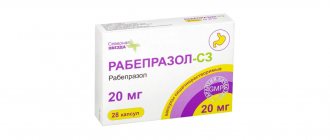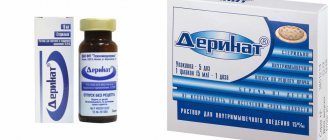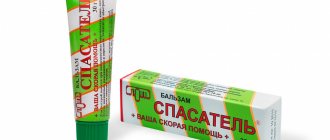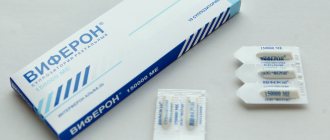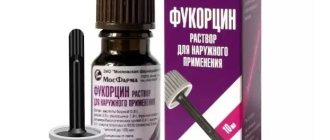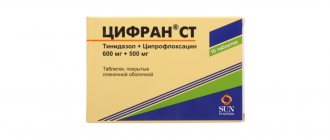With gastritis, ulcers and other lesions of the stomach, increased secretion of hydrochloric acid is observed - the main component of gastric juice. The result is ulcers, pain, digestive disorders and other consequences. Various medications are used to prevent it, including Rabeprazole. This is an effective remedy at an affordable price.
"Rabeprazole" composition and description
The drug is available in the form of capsules, which dissolve when entering the intestines. The active ingredient is rabeprazole sodium (10 or 20 mg in each capsule). The drug has an antiulcer effect.
It affects enzymes that are synthesized by the parietal cells of the stomach. As a result, hydrochloric acid is partially blocked, which reduces the secretion of gastric juice even with food intake. The active substance is completely absorbed within 3-4 hours. Moreover, the bioavailability of the drug does not depend on what time the capsules are taken.
The product should be stored under normal room conditions, away from direct sunlight. Access for children is excluded. The general shelf life is 2 years from the date of production.
Rabeprazole, 20 mg, enteric tablets, 14 pcs.
Before and after treatment, endoscopic monitoring is required to exclude malignant neoplasms, because Treatment may mask symptoms and delay correct diagnosis.
Rabeprazole tablets should not be chewed or crushed. The tablets should be swallowed whole. It has been established that neither time of day nor food intake affects the activity of rabeprazole.
In a special study in patients with mild or moderate hepatic impairment, the incidence of side effects of rabeprazole was not found to be significantly different from that in age- and sex-matched healthy individuals, but despite this, caution is recommended when first prescribing the drug to patients with severe impairment. liver.
For patients with impaired renal or hepatic function, dosage adjustment of rabeprazole is not required. The AUC of rabeprazole sodium in patients with severe hepatic impairment is approximately two times higher than in healthy patients.
Hypomagnesemia
Rare cases of symptomatic or asymptomatic hypomagnesemia have been reported when treated with PPIs for at least 3 months. In most cases, these reports were received one year after therapy. Serious adverse events included tetany, arrhythmia, and seizures. Most patients required treatment for hypomagnesemia, including magnesium replacement and PPI discontinuation. In patients who will be receiving long-term treatment or who are taking PPIs with drugs such as digoxin or drugs that can cause hypomagnesemia (eg, diuretics), health care providers should monitor magnesium concentrations before initiating PPI treatment and during treatment.
Patients should not take other acid-reducing agents, such as H2-histamine blockers or proton pump inhibitors, at the same time as rabeprazole.
Bone fractures
PPI therapy may increase the risk of osteoporosis-related fractures of the hip, wrist, or spine. The risk of fractures is increased in patients receiving high doses of PPIs for a long time (a year or more).
Concomitant use of rabeprazole with methotrexate
According to the literature, simultaneous use of PPIs with methotrexate (primarily in high doses) can lead to increased concentrations of methotrexate and/or its metabolite hydroxymethotrexate and increase the half-life. which can lead to methotrexate toxicity. If high doses of methotrexate are required, temporary discontinuation of PPI therapy may be considered.
Infections caused by Salmonella, Campylobacter and Clostridium difficile
PPI therapy may lead to an increased risk of gastrointestinal infections, such as those caused by Salmonella, Campylobacter, and Clostridium difficile.
Impact on the ability to drive vehicles and operate machinery
Based on the pharmacodynamics of rabeprazole and its profile of undesirable effects, it is unlikely that rabeprazole affects the ability to drive vehicles and machinery. However, if drowsiness occurs, these activities should be avoided.
Indications for use
The drug has antiulcer activity. It is prescribed in the presence of such pathologies:
- stomach ulcer;
- ulcerative lesions of the duodenum (also during an exacerbation);
- increased secretion of gastric shock;
- Zollinger-Ellison syndrome;
- gastritis of various types, including chronic (in this case, antibacterial drugs are taken simultaneously);
- relapses of peptic ulcer associated with the action of the bacterium Helicobacter pylori;
- reflux disease of the gastroesophageal type.
Contraindications and side effects
In some cases, taking the drug is excluded:
- hypersensitivity to the active ingredient;
- pregnancy period;
- breastfeeding period.
When taking the drug, side effects may occur from both the digestive system and other systems:
- loss of appetite;
- flatulence;
- constipation;
- nausea, vomiting;
- diarrhea;
- headaches;
- dizziness;
- drowsiness;
- taste disturbances;
- stomatitis;
- visual impairment;
- myalgia;
- pain in the spine;
- feverish condition;
- convulsions;
- arthralgia;
- allergic reactions (rash);
- cough;
- sinusitis;
- runny nose.
If the described phenomena occur, the drug should be stopped. Consultation with a doctor and symptomatic treatment are indicated.
Instructions for use "Rabeprazole"
The drug is taken orally with water. The initial dosage is from 10 to 20 mg of the active substance, which corresponds to 1-2 capsules. The total amount and duration of the course depend on the nature of the disease. The appointment is carried out on the recommendation of a doctor. No cases of overdose have been reported to date.
Important!
In childhood, taking the drug is not recommended, since relevant studies on the effect of the drug on health have not been conducted.
Biowaiver: rabeprazole and its generic analogues
The appearance of a large number of generic drugs on the domestic pharmaceutical market confronts the practicing physician with a difficult choice of which one to give preference to. The study of the interchangeability of drugs can greatly influence the improvement of the effectiveness and safety of pharmacotherapy. The article discusses the results of in vitro tests using the “biowaiver” procedure for the reference drug rabeprazole and its generic analogues. The results of the comparative dissolution kinetics test showed that only two of the six drugs studied correspond to the reference rabeprazole.
Rice. 1. Dissolution profiles of rabeprazole from tablets (R, R1, R2, R5, R6) and capsules (R3, R4) in PBS pH 6.8
Rice. 2. Dissolution profiles of rabeprazole from tablets (R, R1, R2, R5, R6) and capsules (R3, R4) in a pH 4.5 environment
Rice. 3. Dissolution profiles of rabeprazole from tablets (R, R1, R2, R5, R6) and capsules (R3, R4) in an environment with pH 1.2
Similarity coefficients (f2) of dissolution profiles of rabeprazole from 20 mg tablets and capsules in various media
Rice. 4. The ratio of sales volumes of original and generic drugs on the Russian pharmacy market for the first nine months of 2022 and 2022.
Introduction
An important trend in the development of the modern pharmaceutical market is the high degree of saturation of its basic segments due to the introduction of generic medicinal products (MDs) [1]. This direction of development is mainly associated with an increase in demand for non-original drugs, which is explained primarily by the economic component. A simplified procedure for state registration of generic drugs and their lower cost make it possible to reduce costs for manufacturers and consumers [2].
Currently, there is no generally accepted definition interpreting the term “generic”. According to the definition of the World Health Organization (WHO), this is a medicinal product that has proven therapeutic interchangeability with the original drug of a similar composition, produced by a manufacturer other than the original developer without a developer’s license. Experts from the European Medicines Agency (EMA) define a generic as a drug with the same qualitative and quantitative composition of the active substance and in the same pharmaceutical form as the original drug, demonstrating bioequivalence to the reference (standard) drug when conducting bioavailability tests [ 3].
In the Russian Federation, in accordance with the Federal Law of April 12, 2010 No. 61-FZ (as amended on December 27, 2022) “On the circulation of medicines,” the concepts of reproduced and reference medicines are established.
Reference drug is a drug that was first registered in Russia, the quality, effectiveness and safety of which have been proven based on the results of preclinical studies of drugs and clinical studies of drugs conducted in accordance with the requirements of parts 6 and 7 of Article 18 of the above law in relation to drugs for medical use.
A generic drug is a drug that has the same qualitative and quantitative composition of active substances in the same dosage form as the reference drug, and the bioequivalence or therapeutic equivalence of which to the reference drug has been confirmed in relevant studies [4].
One of the main goals of the federal target program “Development of the pharmaceutical and medical industry of the Russian Federation for the period until 2022 and beyond” (Resolution of the Government of the Russian Federation of February 17, 2011 No. 91) is the development and introduction into production of competitive generic drugs [5].
At the moment, the draft order of the Government of the Russian Federation “Strategy for the development of the pharmaceutical industry of the Russian Federation for the period until 2030” has been discussed, providing for an increase in the volume of exports of pharmaceutical products to foreign markets, which presupposes the compliance of innovative and reproduced drugs with international quality standards.
The use of generic drugs is advisable from a therapeutic and economic point of view if they have proven therapeutic equivalence or bioequivalence with respect to the reference drug and have equivalent qualitative and quantitative composition of active substances, composition of excipients, dosage form and route of administration, that is, they are interchangeable [6].
According to Rosstat, diseases of the digestive system rank third among the causes of death in Russia, behind diseases of the circulatory system and malignant neoplasms. A significant proportion of diseases of the gastrointestinal tract (GIT) are acid-dependent diseases (ADDs). The relevance of this problem is due to the widespread prevalence of CVD among the population of all countries (40–50%) and the development of serious complications. Proton pump inhibitors (PPIs), which include rabeprazole, are considered therapeutic leaders for gastrointestinal tract diseases and are mandatory for use in accordance with leading clinical guidelines [7–13].
PPIs are prodrugs, the modification of which into a drug occurs in the acidic environment of the stomach [14, 15]. The highest rate of onset of the antisecretory effect is characteristic of rabeprazole, which has been proven in numerous studies [16–22] and is explained by a number of properties of the drug. The highest value of the ionization constant (pKa) of rabeprazole compared to other substances determines faster transformation and a high rate of its accumulation in the tubules of parietal cells. The pKa value also affects the stability of the molecule in an acidic environment. Rabeprazole is the least stable under these conditions, as a result of which it is easily activated both at low and at fairly high pH levels. A unique feature of the drug is its metabolism, which is minimally associated with the cytochrome system CYP2C19 and CYP3A4. The main route of metabolism is non-enzymatic reduction to thioester, which provides a stable antisecretory effect regardless of what type of metabolizer the patients are [23, 24], and also minimizes the risk of pharmacokinetic interactions with other drugs [25].
Rabeprazole preparations are widely represented on the Russian pharmaceutical market. Thus, currently 13 generic drugs are registered in the form of solid dosage forms containing rabeprazole sodium as the active ingredient [26]. The study of the interchangeability of these generic drugs relative to the reference one is of particular interest, due to the significant effectiveness and safety of rabeprazole, proven in numerous studies [27–30].
According to WHO, from 10 to 20% of reproduced drugs do not pass quality control testing, which may be due to the poor quality of the original substances, modifications of the technological process and other pharmaceutical factors that determine the properties of the finished drug [31]. Thus, the study of the interchangeability of drugs is relevant and can largely influence the increase in the effectiveness and safety of pharmacotherapy.
An alternative to time-consuming and costly in vivo
To determine the bioequivalence of reproduced drugs, the introduction of comparative
in vitro
using the “biowaiver” procedure may be possible.
Biowaiver _
) - a procedure according to which the determination of interchangeability and registration of generic drugs is carried out on the basis of their biopharmaceutical properties (according to the biopharmaceutical classification system (BCS)) and
in vitro
in vitro
methods
in
bioequivalence studies vivo .
According to the position of the EMA [12, 32], WHO [20] and the US Food and Drug Administration (FDA) [11], confirmation of the bioequivalence of pharmaceutically equivalent or alternative drugs in one of the options may be obtained from comparative in vitro
.
The concept of “biowaiver” is used in Russian regulatory documents as a replacement for a bioequivalence study with a comparative dissolution kinetics test (CDKT) [3]. According to the literature [33–36], in comparative studies of in vitro
the authors established the equivalence of a number of reproduced drugs of various pharmacological groups to the reference drug, which can serve as a basis for recognizing these drugs as interchangeable in accordance with foreign legislation.
Purpose
This study is to assess the
in vitro
of rabeprazole preparations presented on the Russian pharmaceutical market according to TSCR.
Material and methods
The object of the study was rabeprazole drugs presented on the pharmaceutical market of St. Petersburg - enteric-coated tablets and capsules containing 20 mg of active pharmaceutical substance (API). Six different generic drugs, named R1, R2, R3, R4, R5, R6, were compared with the original drug rabeprazole (R) using TSKR.
In vitro equivalence
were assessed based on the Guidelines for the Examination of Drugs [32] in 900 ml media with different pH values: HCl 0.1 M (pH 1.2) and phosphate buffer solutions (PBS) (pH 6.8 and 4.5). The test was carried out on 12 units of each drug using the “RC-6 Dissolution Tester” device (China), “Paddle mixer” apparatus.
Statistical data processing was carried out using Microsoft Office Excel at a confidence level of P = 95% and the corresponding Student coefficients (tp) according to the State Pharmacopoeia of the Russian Federation, XIV edition (SP XIV), volume 1.
Research results
Rabeprazole sodium, a substituted benzimidazole salt, is a white or slightly yellowish-white substance, very soluble in water and methanol, soluble in ethanol, chloroform and ethyl acetate, insoluble in ether and n-hexane. According to the BCS, rabeprazole belongs to class I or III due to its high solubility, which makes it possible to carry out TSCR for this API.
In accordance with the requirements of Global Fund XIV, enteric dosage forms must be resistant to the effects of gastric juice and release the active substance in the intestinal juice [37].
All studied drugs met the quality requirements in terms of “dissolution” according to “GPM.1.4.1.0015.18 Tablets”, “GPM.1.4.1.0005.18 Capsules” and “GPM.1.4.2.0014.15 Dissolution for solid dosage forms” ( GF XIV, volume 2). At the same time, it was found that the release of rabeprazole from the studied drugs in an environment with pH 6.8 occurred at different rates (Fig. 1). Thus, the substance from capsules (R3 and R4) passed into the dissolution medium faster compared to tablets, which is associated with a higher rate of dissolution of the hard gelatin shell of the capsules. The difference in the rate of release of rabeprazole from drug R2 is apparently due to the presence of two disintegrants (methylcellulose and carboxymethylcellulose) in combination with starch.
In an environment with pH 4.5, the release of the active substance was observed only from drug R2 (Fig. 2), which can be explained by the presence of polysorbate-80 in the enteric coating of this drug, which improves the wettability and water permeability of the dosage form [38].
In a dissolution medium with pH 1.2, simulating gastric juice, the amount of API released from all studied drugs did not exceed 3% (Fig. 3).
The similarity of the dissolution profiles of rabeprazole from 20 mg tablets and capsules in different media was confirmed by calculating the similarity coefficients f2, the values of which should be in the range of 50–100 (table). Thus, in a medium of 0.1 M HCl pH 1.2, all studied rabeprazole drugs turned out to be similar to the reference drug. The values of similarity coefficients in a medium with pH 4.5 indicate the equivalence of five drugs (R1, R3, R4, R5 and R6) to the reference drug, while in a medium with pH 6.8 similarity was established only for two drugs (R1 and R5) .
When assessing the biological equivalence of rabeprazole preparations according to TSKR in vitro
The similarity of the dissolution profiles of rabeprazole sodium from drugs R1 and R5 was established, which suggests their bioequivalence to the reference drug Pariet. Other studied drugs are not equivalent to the original drug in all environments, so we cannot speak with confidence about their bioequivalence.
Discussion
The main trend of the Russian pharmaceutical market over recent years has been the switching of consumers to generic drugs. According to the analytical report of DSM Group, based on the results of the first nine months of 2022, the share of original drugs decreased by 1.1% in rubles and by 0.6% in units compared to the same period last year. At the same time, there is a significant predominance of the group of generic drugs - 62.7% in value terms and 84.4% in physical terms. According to forecasts, the numbers will increase (Fig. 4) [2].
As already noted, the cost of generic drugs is usually lower than original drugs, which is explained by the lack of manufacturer costs for the search and development of APIs, dosage forms, conducting full-scale clinical trials, as well as advertising and promotion [31].
Not all generic medicinal products fully correspond to the reference drugs. In vitro drug research
according to TSKR can resolve issues of bioequivalence in a relatively short time, at least immediately identify drugs whose properties do not correspond to those of the original drug.
In the above study of various rabeprazole analogues for compliance with the characteristics of the original drug, it was demonstrated that only two of the six reproduced products can fully serve as an alternative to the reference drug.
The rapid solubility of most of the tested drugs in an alkaline environment (pH 6.8), in contrast to the original rabeprazole, will certainly affect the clinical effectiveness of the drugs under conditions of elevated pH values, which is observed, for example, with alkaline reflux.
Thus, the question remains of choosing an adequate replacement of reference drugs based on the results of a bioequivalence study, the first stage of which may be TSKR.
The authors declare no conflict of interest.
Drug interactions
The active substance rabeprazole sodium does not interact with antacids, so it is allowed to be taken together with drugs such as Rennie, Almagel, Phosalugel, etc.
At the same time, rabeprazole can increase the concentration in the blood of substances such as digoxin and ketoconazole. This is important to consider when taking medications with these active ingredients.
Rabeprazole can be taken together with medications such as Theophylline, Phenytonin, Warfarin and Diazepam. The simultaneous use of Pantoprazole is possible.
Rabeprazole PSK
Drugs metabolized via cytochrome CYP450 isoenzymes
Rabeprazole sodium, like other proton pump inhibitors (PPIs), is metabolized by the cytochrome P450 (CYP450) system in the liver. in vitro studies
Using human liver microsomes, it was shown that rabeprazole sodium is metabolized by the isoenzymes CYP2C19 and CYP3A4.
Studies in healthy volunteers have shown that rabeprazole sodium has no pharmacokinetic or clinically significant interactions with drugs that are metabolized by the cytochrome P450 system - warfarin, phenytoin, theophylline and diazepam (regardless of whether patients metabolize diazepam extensively or poorly).
Warfarin
There are reports of prolongation of the international normalized ratio (INR) and prothrombin time (PT) in patients receiving concomitant proton pump inhibitors, including rabeprazole, and warfarin. Prolongation of INR and PT may lead to an increased risk of bleeding.
Cyclosporine
in vitro studies
with human liver microsomes, it was shown that rabeprazole inhibits the metabolism of cyclosporine with an inhibitory concentration of 50-62 μmol, which is more than 50 times higher than the maximum concentration in healthy volunteers after administration of 20.0 mg rabeprazole. This degree of inhibition was similar to that of omeprazole at equivalent concentrations.
Medicines whose absorption depends on gastric pH
Rabeprazole sodium provides a stable and long-lasting suppression of gastric acid secretion. Thus, interactions may occur with substances for which absorption is pH dependent. When taken simultaneously with rabeprazole sodium, the absorption of ketoconazole is reduced by 30%, and the absorption of digoxin is increased by 22%. Therefore, some patients should be monitored to determine whether dose adjustments are necessary when taking rabeprazole sodium concomitantly with ketoconazole, digoxin, or other drugs for which absorption is pH dependent.
Concomitant use of rabeprazole and antacids
does not lead to clinically significant changes in plasma concentrations of rabeprazole.
With simultaneous use of atazanavir
with proton pump inhibitors, a significant decrease in the concentration of atazanavir is expected, which leads to a decrease in its therapeutic effect, therefore the simultaneous use of atazanavir with proton pump inhibitors (including rabeprazole) is not recommended.
With simultaneous use of rabeprazole, amoxicillin and clarithromycin, the AUC and Cmax values for clarithromycin and amoxicillin were similar when comparing combination therapy with monotherapy. The AUC and Cmax of rabeprazole increased by 11% and 34%, respectively, and the AUC and Cmax of 14-hydroxyclarithromycin (the active metabolite of clarithromycin) increased by 42% and 46%, respectively. This increase in indicators was not considered clinically significant.
Methotrexate
Based on reports of adverse events, published pharmacokinetic studies and retrospective analysis, it can be assumed that the simultaneous use of proton pump inhibitors and methotrexate (primarily in high doses) may lead to increased concentrations of methotrexate and/or its metabolite hydroxy methotrexate and prolong the period half-life. However, no specific drug interaction studies have been conducted between methotrexate and proton pump inhibitors.
Medicines metabolized by the CYP2C19 isoenzyme
In a clinical study in Japan evaluating rabeprazole in patients according to CYP2C19 genotype (n=6 in each genotype category), acid suppression was greater in poor metabolizers than in extensive metabolizers, which may be due to higher rabeprazole concentrations in poor metabolizers. Differences between slow and extensive metabolizers in interactions with other drugs metabolized by CYP2C19 have not been studied.
special instructions
The course of treatment with Rabeprazole should begin with a check of the gastrointestinal tract. If malignant tumors are detected, you should not take the drug, since the medicine masks some of the symptoms of cancer. This can make them difficult to diagnose and treat because time will be lost.
The drug should be taken with caution in cases of diagnosed liver disease. If taken simultaneously with Digoxin and Ketonazole, the dosage of these drugs must be adjusted.
One of the possible side effects of Rabeprazole is increased fatigue and drowsiness. Therefore, drivers and operators of moving machinery should take the product with caution. During therapy, you may have to temporarily give up work that requires increased concentration.
